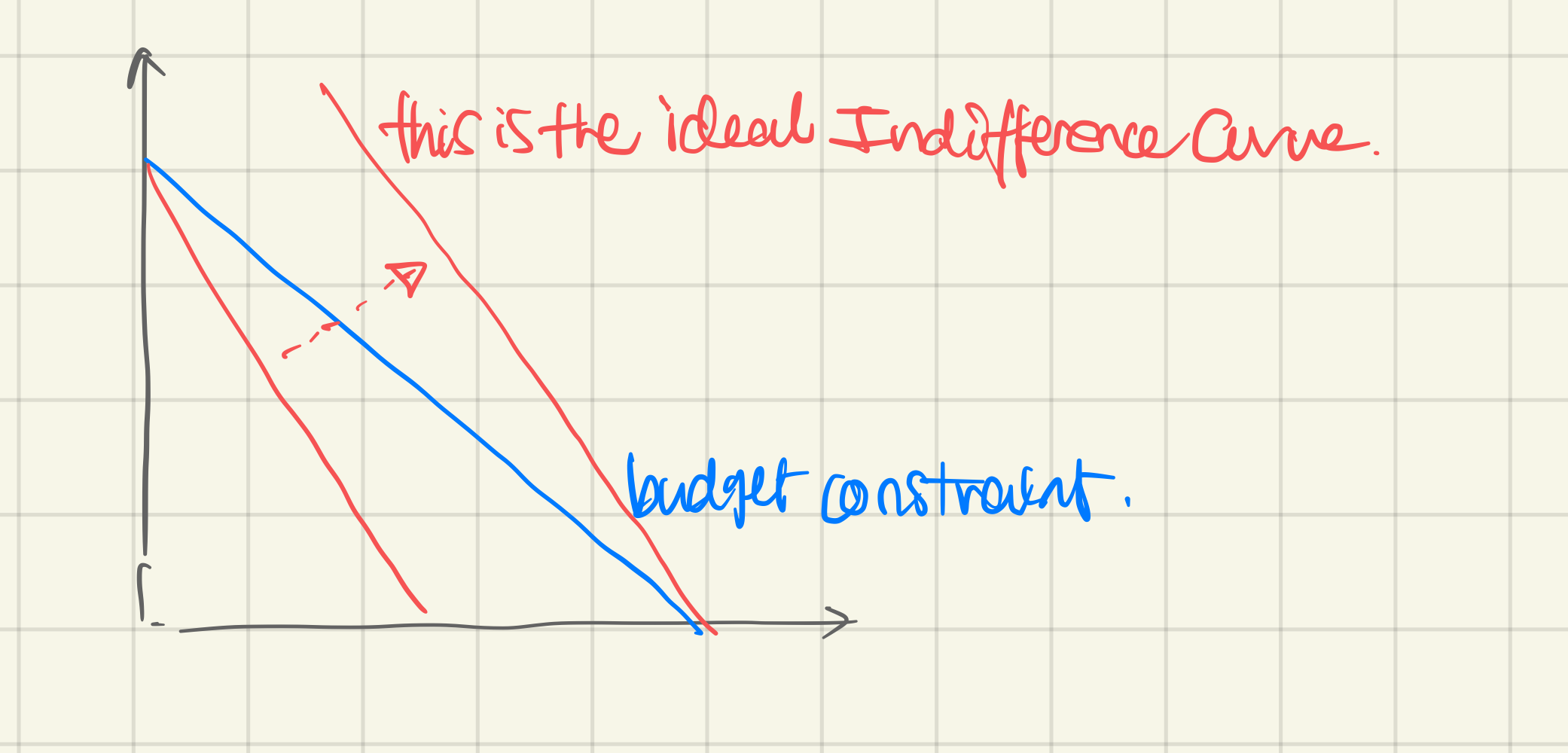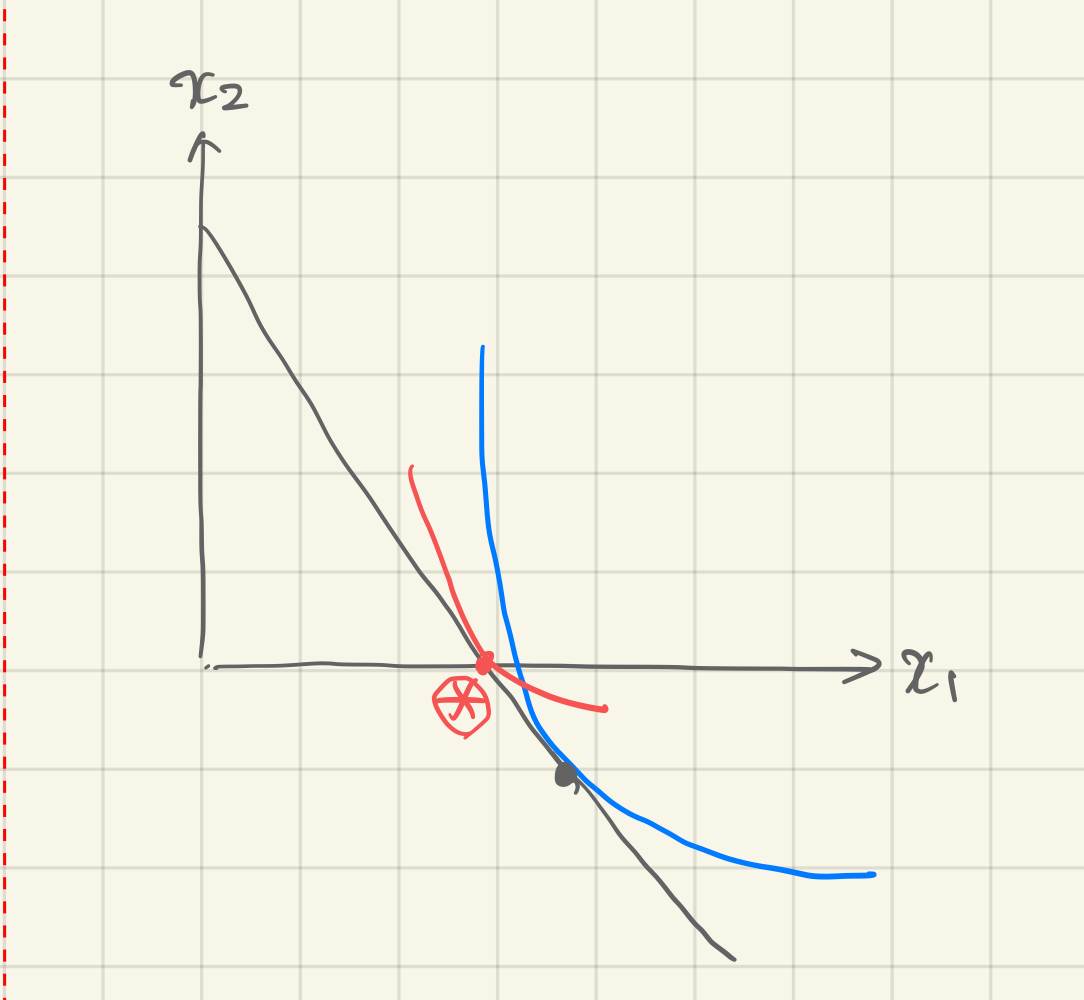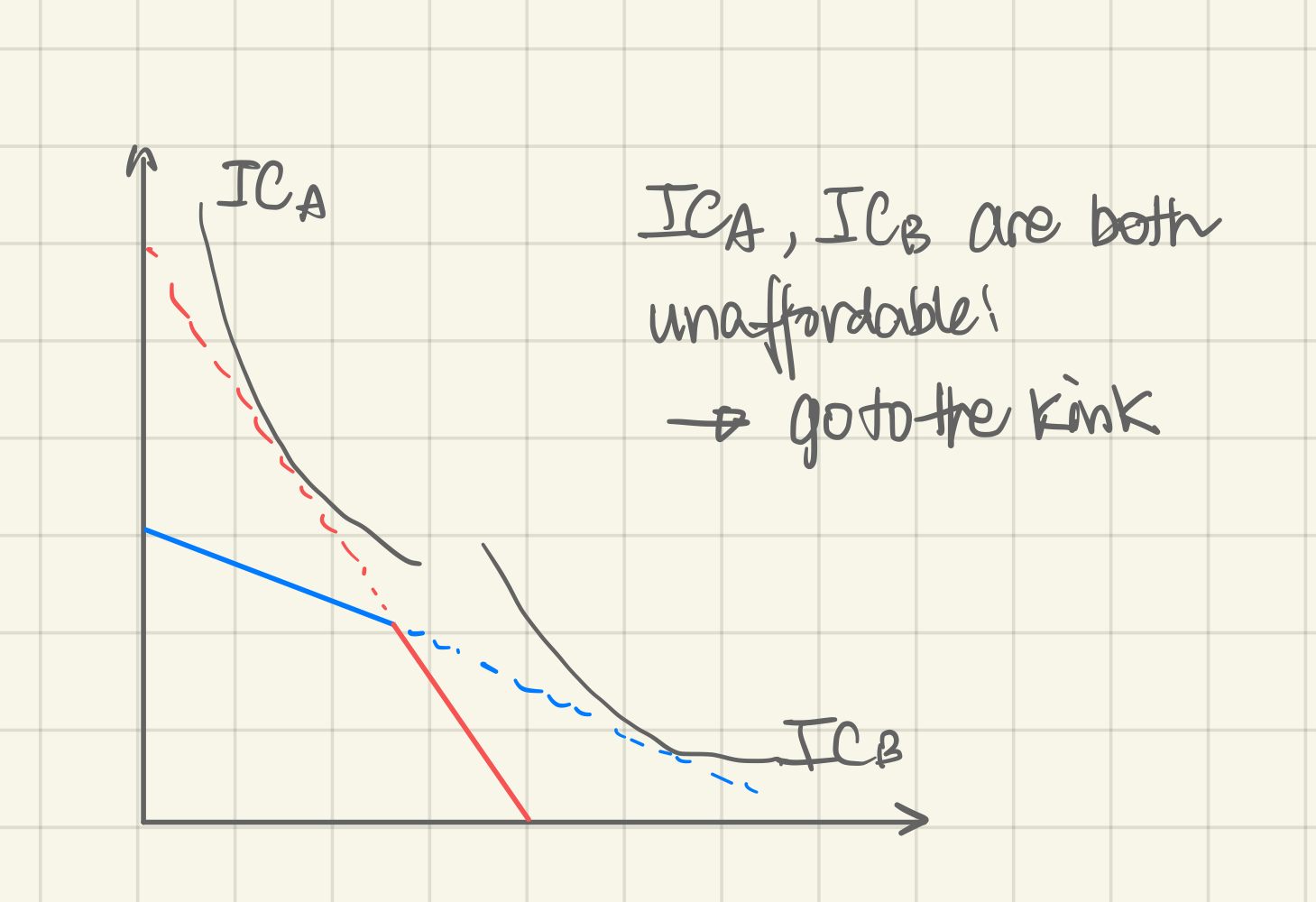Maximization of the Utility Function against the Budget Constraints.
- Uses Lagrangian Optimization
- & If it makes it more convenient, do a Monotonic Transformation of the utility function. See Example.
- Optimal is where the budget line is the tangent to the Indifference Curve. This implies both gradients are same, i.e.
- The result is the Ordinary Demand functions (one for each good)
- See Expenditure Minimization for the opposite case
- ! Always check if the resulting are positive. If not, it’s piecewise function to keep both positive.
Perfect Substitutes
With the form:
 ⇒ Go to the corner that gives the highest utility (=buy only one good!)
⇒ Go to the corner that gives the highest utility (=buy only one good!)
Perfect Compliments

- Get the formula that is the set of all kinked points in the utility function ⇒
- Get the Constraint formula ⇒
- Solve for the two equations (=get the intersection)
Quasilinear Optimization
Use Lagrangian optimization, but beware that the blue line might happen (=maximum point lies outside ):
 ⇒ In this case, go to the red
⇒ In this case, go to the red (*) corner solution.
Kinked Budget Constraint
- Case 1: Inner kink
- Lagrangian for blue section
- Lagrangian for red section
- Choose the better one

- Case 2: Outer Kink
- Lagrangian for blue and red section
- If both solutions are unaffordable (= in the graph i.e. in graph,), go to the kink.

More than Two Goods
- Case 1: ← Pure three-var cobb-douglas
- ⇒ Use 3-var lagrangian
- ==Case 2: ==
- Check that each term is Homogenous Degree of 1.
- Try the two-var lagrangian on the first term (assumping isn’t consumed)
- Try to maximize (assuming isn’t used)
- Choose the higher of the two utilities
- If there is no concrete number, the cases differ on the conditions
Solution for Case 2:
Graphing a budget line with an indifference map, we can see that the bundle is where the consumer can achieve the most possible utility; where what is affordable = most possible utility
To find the bundle(=point) of maximum utility that is affordable, you can rephrase the problem as…
Worked Example: Constrained Optimization Problem
Using the Lagrange Method for ,
To simplify further: and thus let:
to construct a set of equations where:
and solve the three equations. Note that the Lagrange method doesn’t work when:
- One or more goods are non-essential, meaning that the budget line crosses the axes → It’s a corner solution; i.e. the maximum point is at one of the intercepts, or at points where quantities of goods are negative
- Tastes are non-convex, where there will be multiple solutions
- Utility Function are kinked or otherwise non-differentiable